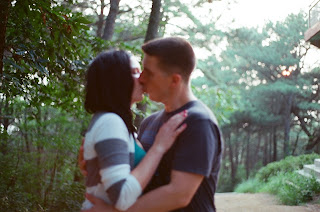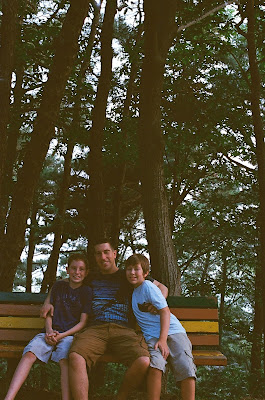Bracketing for a family photo shoot and how to find the perfect light.
 |
| Lomo CN400, Olympus Om1 |
Bracketing means if I go into a shoot think my ideal settings will be 1/60 second and 4f, I will shoot every picture one or two stops under and over exposed. This would ensure a good shot nearly every time. However, it also means not every shot on my roll will be good.




In a family session, things move at a quick pace. At this point in my photo "career" I most likely exposed using my cameras internal light meter, which means I failed to account for the shadows, leaving a good amount of my pictures just slightly underexposed. The pictures came out well, but I would only consider the ones exposed well "frame worthy".


Bracketing works great when you want a few really good shots but aren't too worried about a consistent look for the whole roll.
Things get awesome when you find the perfect light while bracketing. Most film can handle a bit of overexposure. The following four frames were just that. This was unintentional at the time, but looking back, afterward, I am able to see what light elements are ideal.




A note about my "look".
Another aspect of the photos I love is that people are shown as they are; happy, natural, and most definitely not photoshopped. A lot of people (mostly women) will say they don't like this or that about their body. They hope a photographer can take pictures that look like their ideal self and not pictures of what they really look like. In my opinion, very rarely is someone truly ugly. We may have flaws, but flaws remind us that we are human, we are real. I want pictures to represent real people. When you get your photos taken, I want your family, your kids, your grandkids to remember who you really are and be proud.
This is probably one of my favorite photo sessions. In the words of Andreas Feininger (Photographic Seeing; 1973):
An "amateur" is somebody who does something because he loves to do it, the word amateur coming from the Latin amator, which means "lover," and amare, which means "to love." Let's always keep this in mind because it contains one of the keys to success: unless you love what you are doing, you will never become really good at it.During that time I was truly an amateur in photography. Every roll of film, I shot because I loved to. This family in particular was good friends with ours, while living in Korea. These photos are mere representations of the love they had for one another and it was always a joy to be in their presence.



Comments
Post a Comment